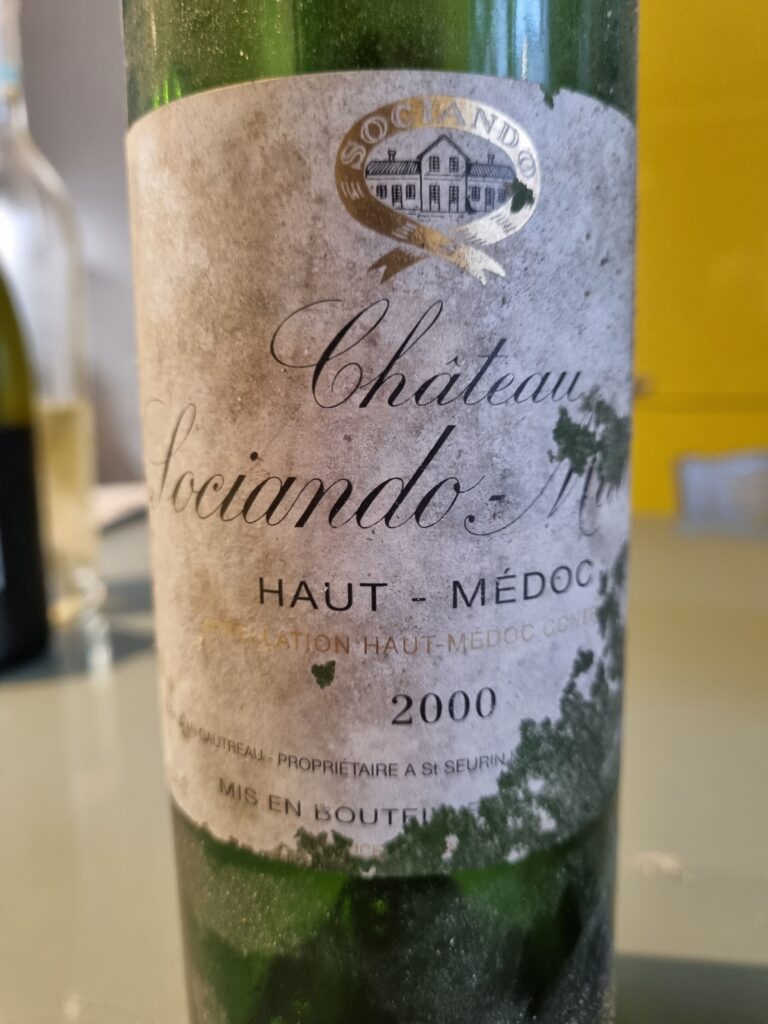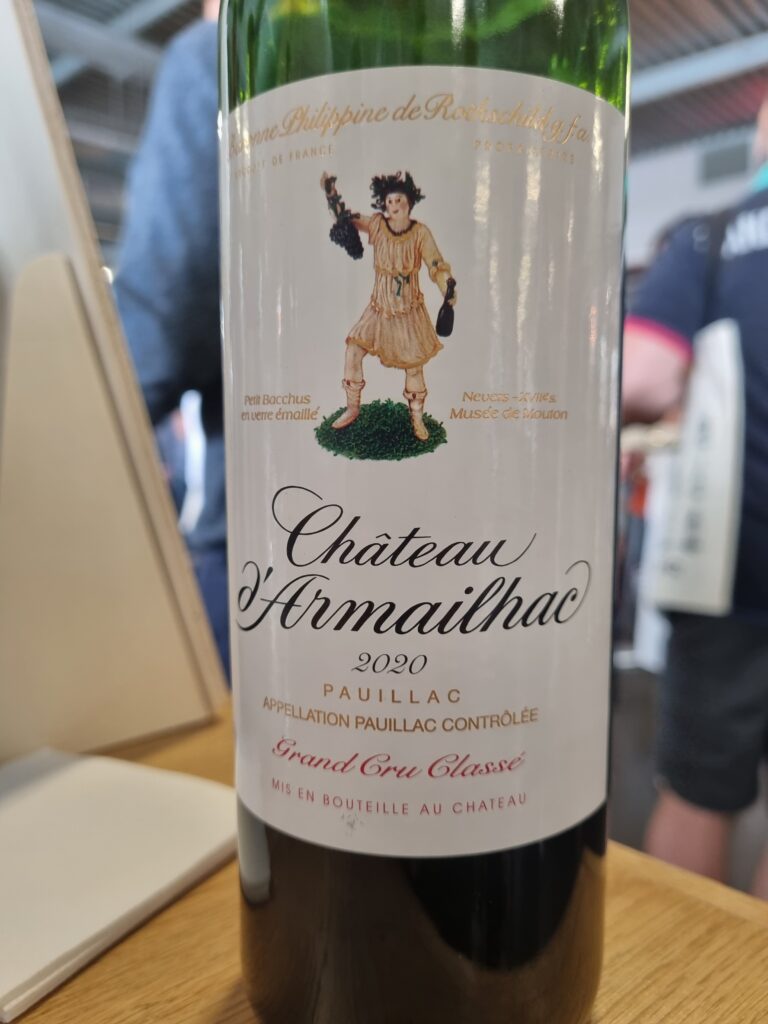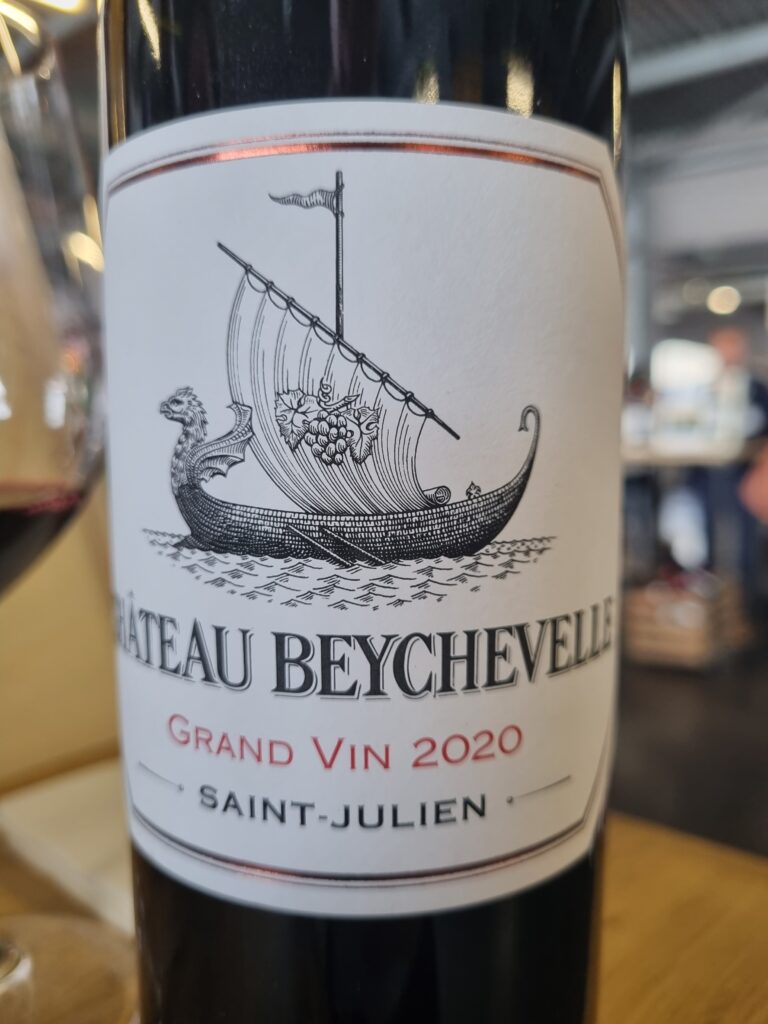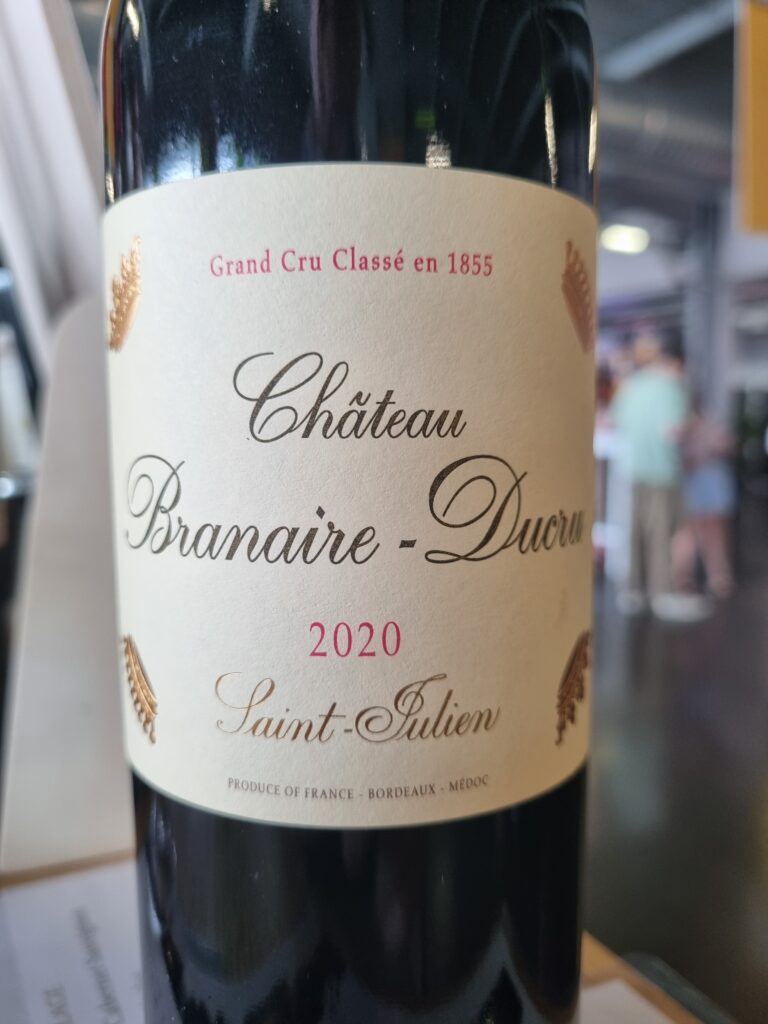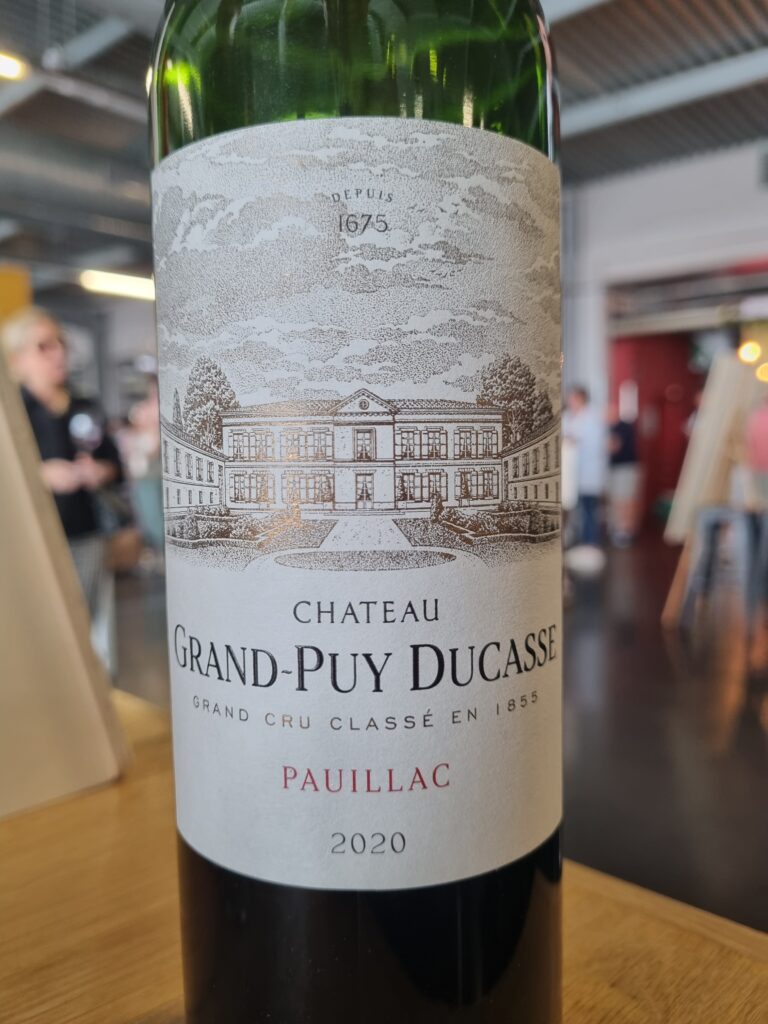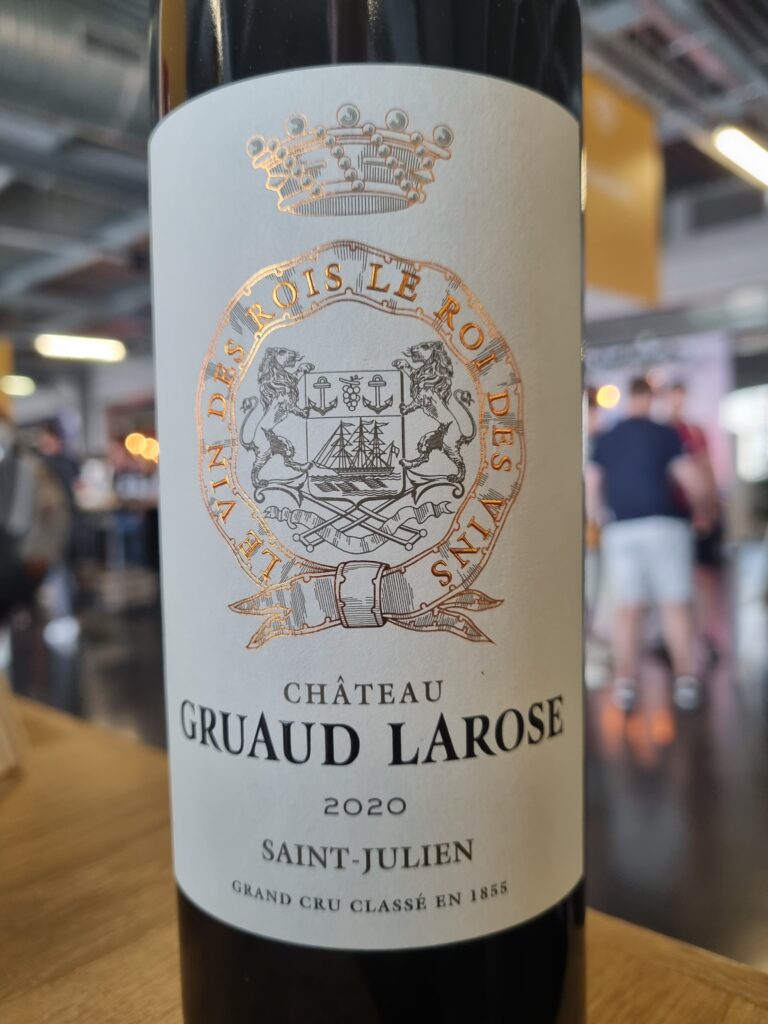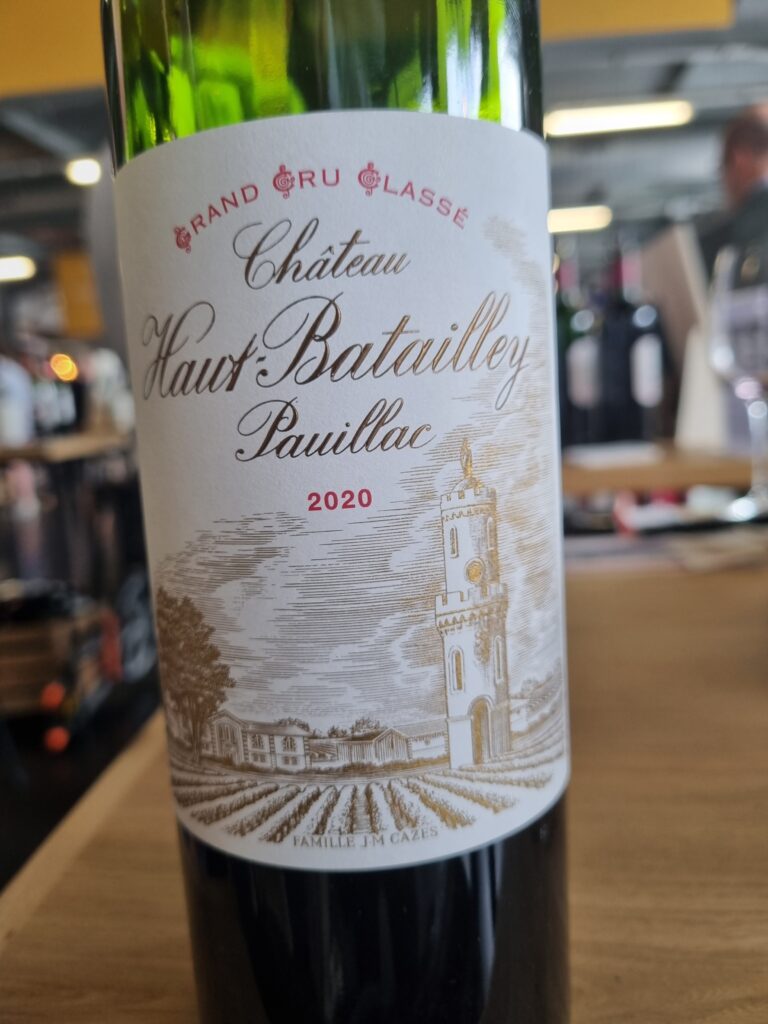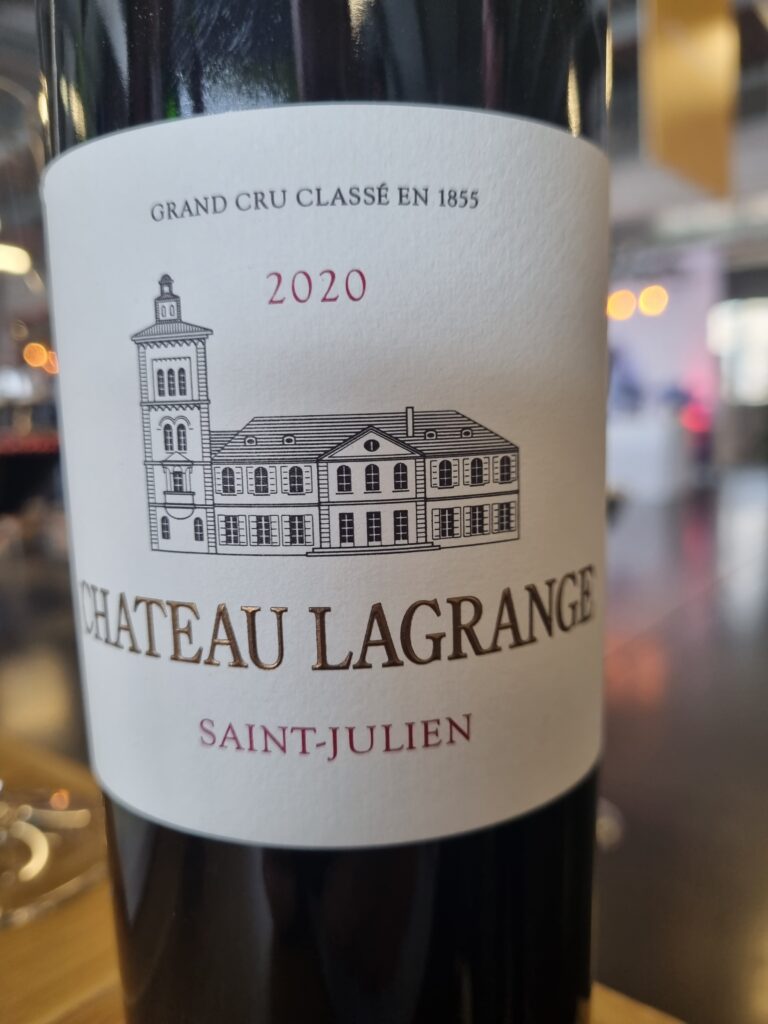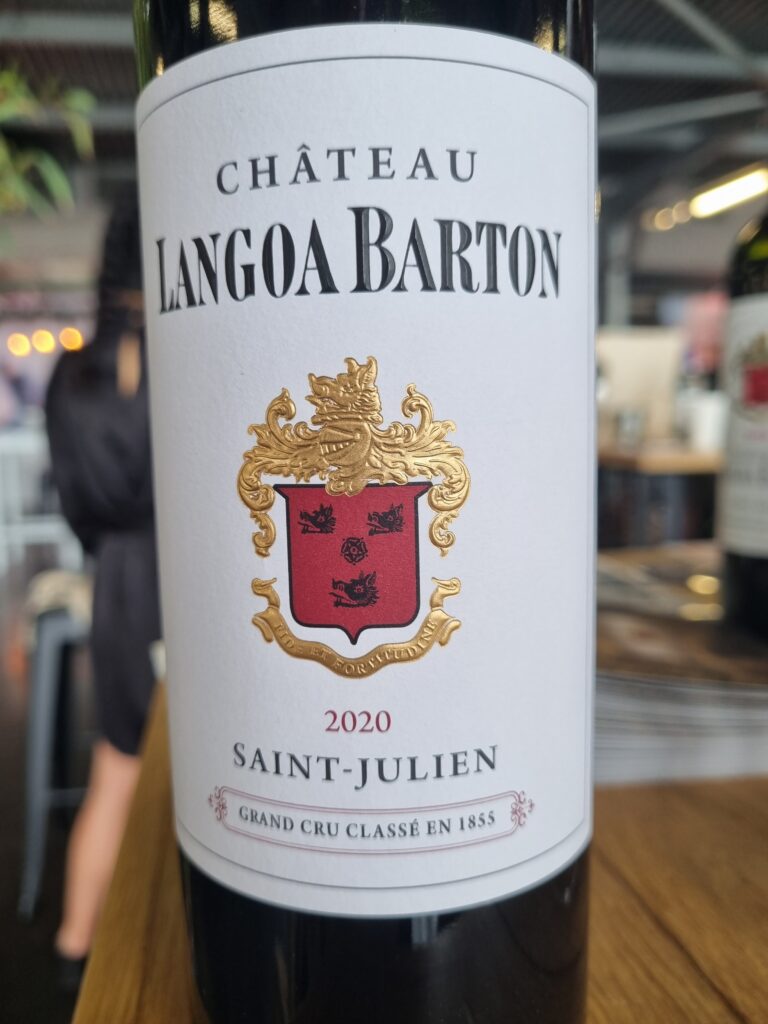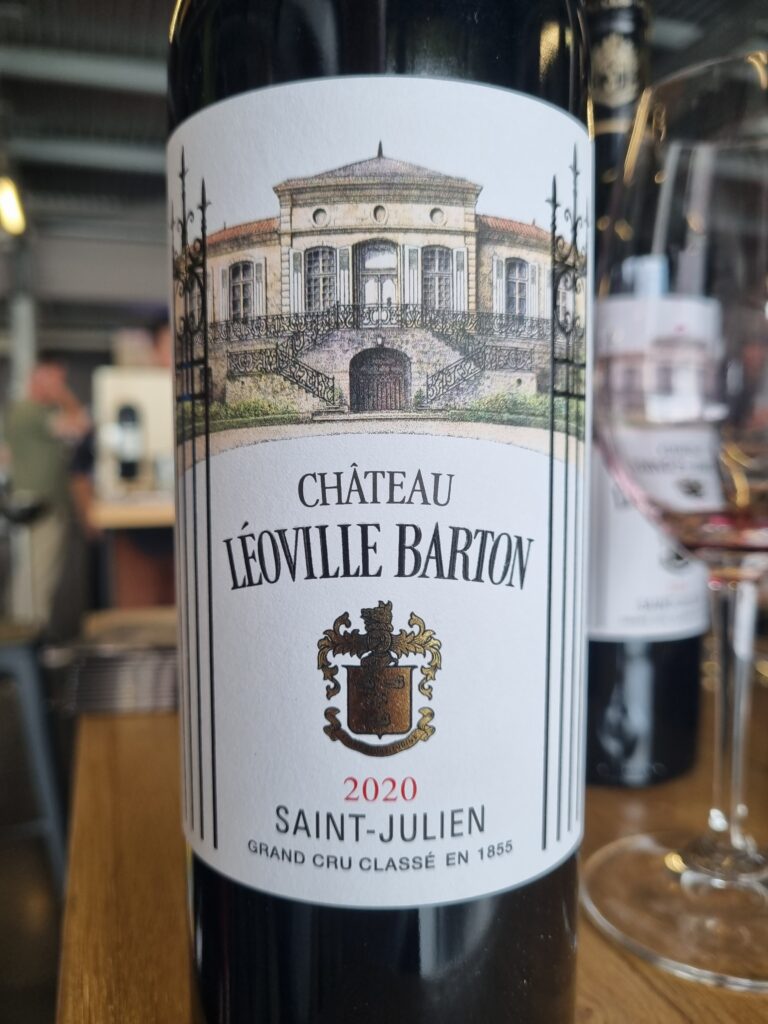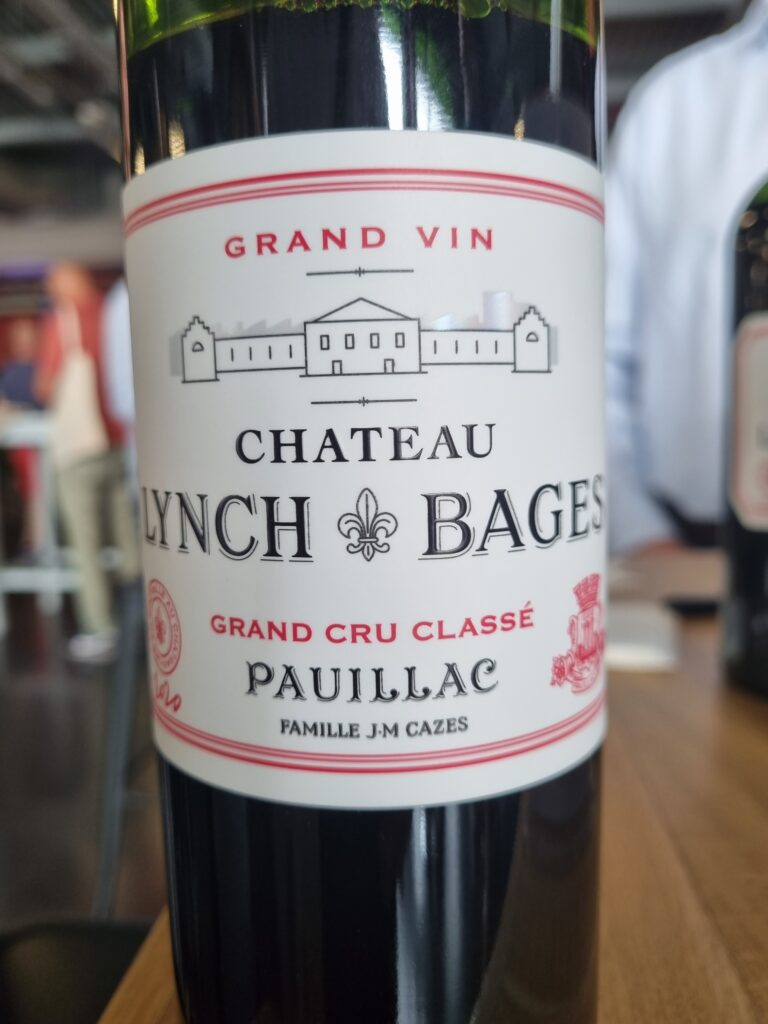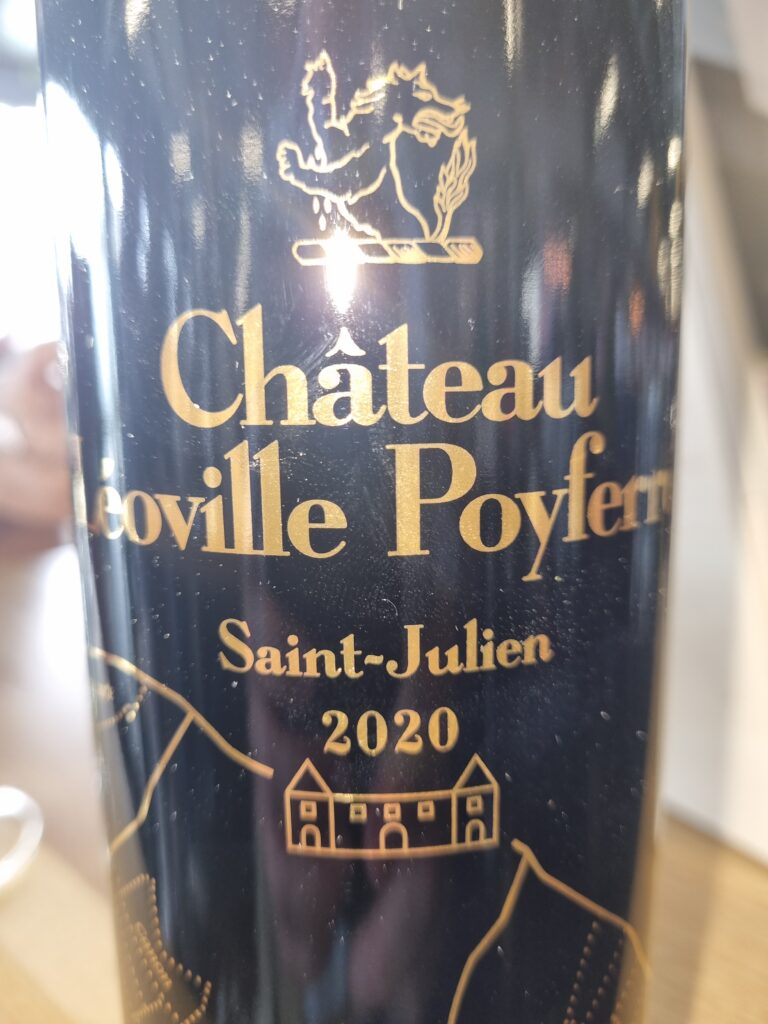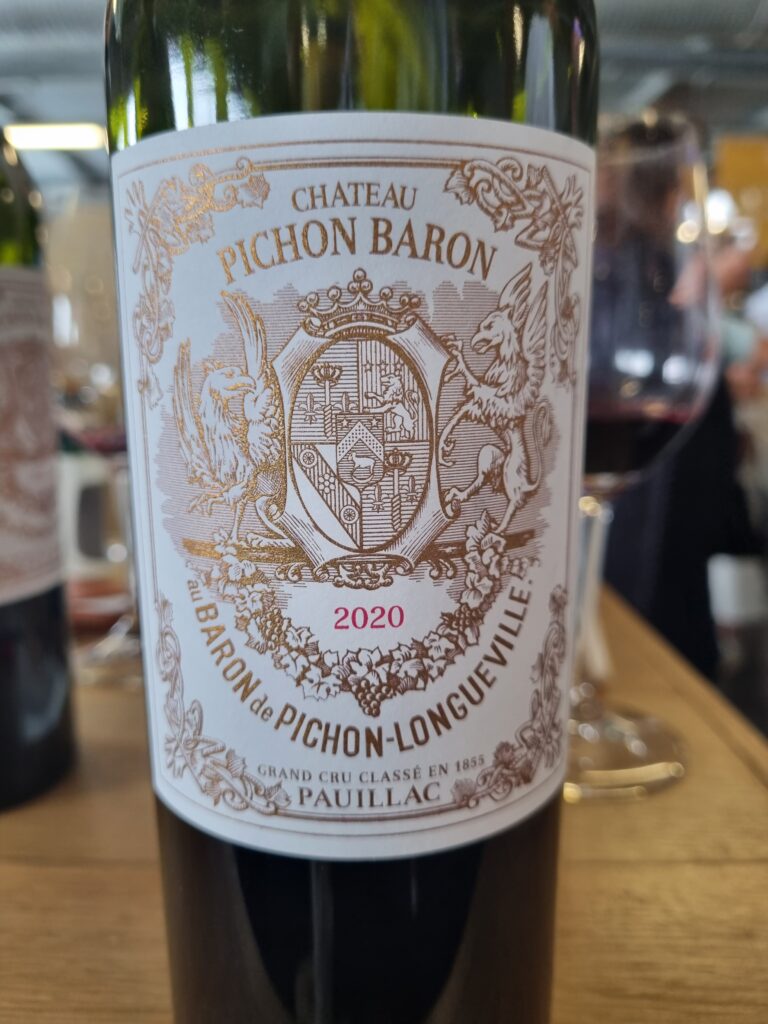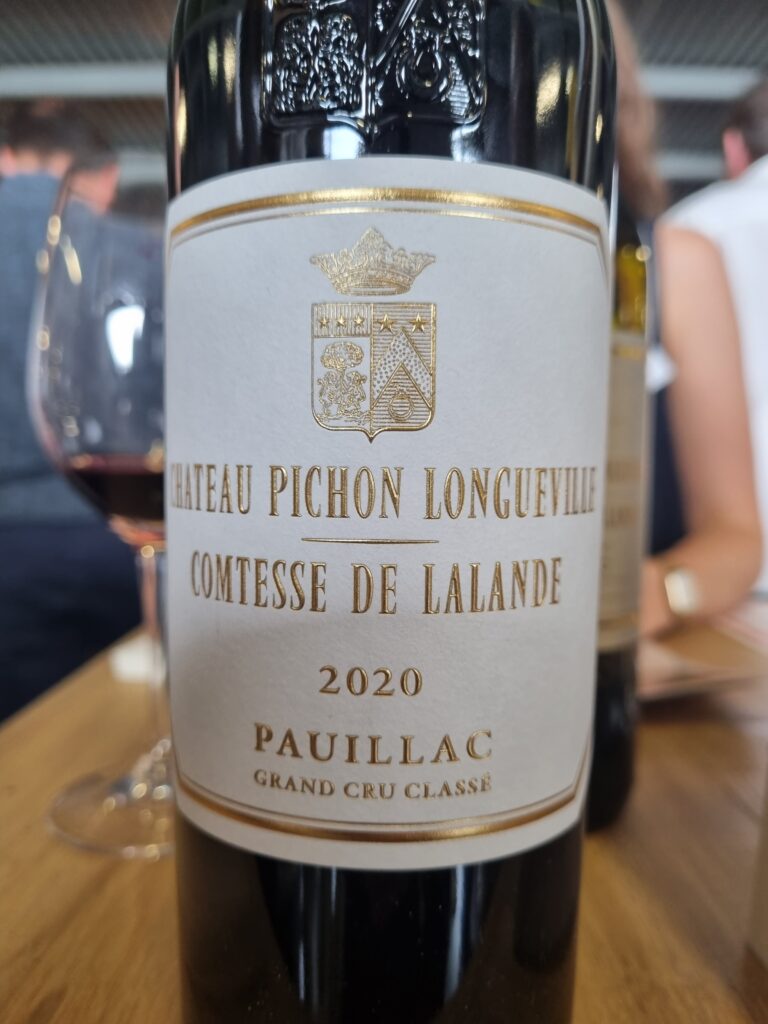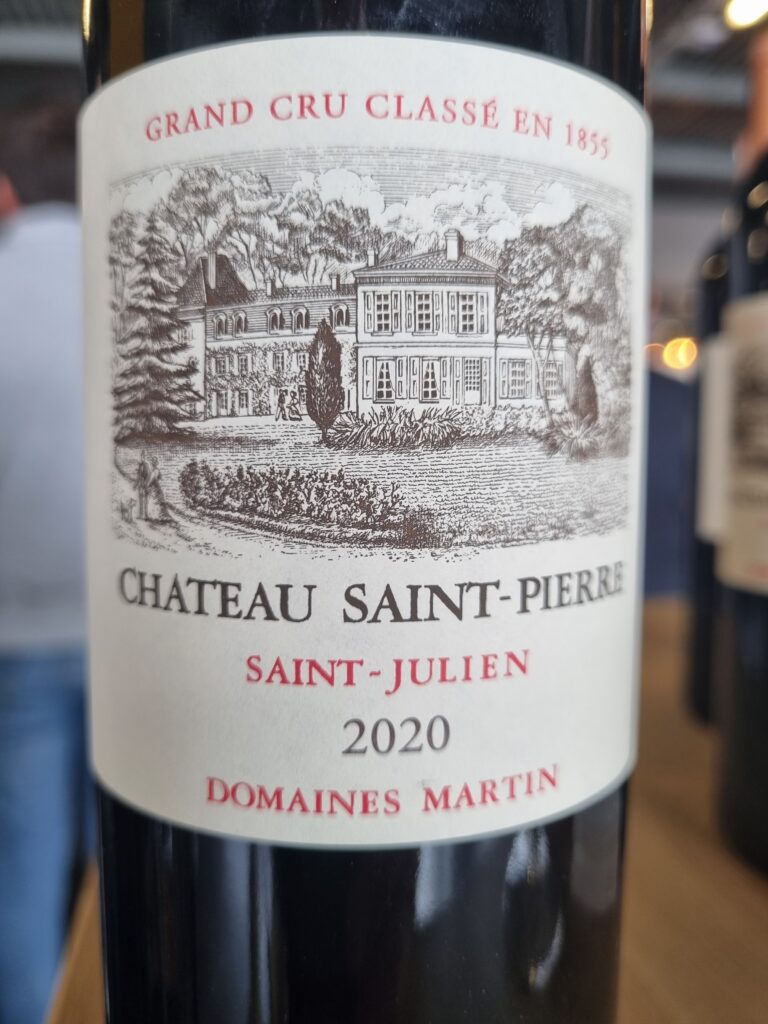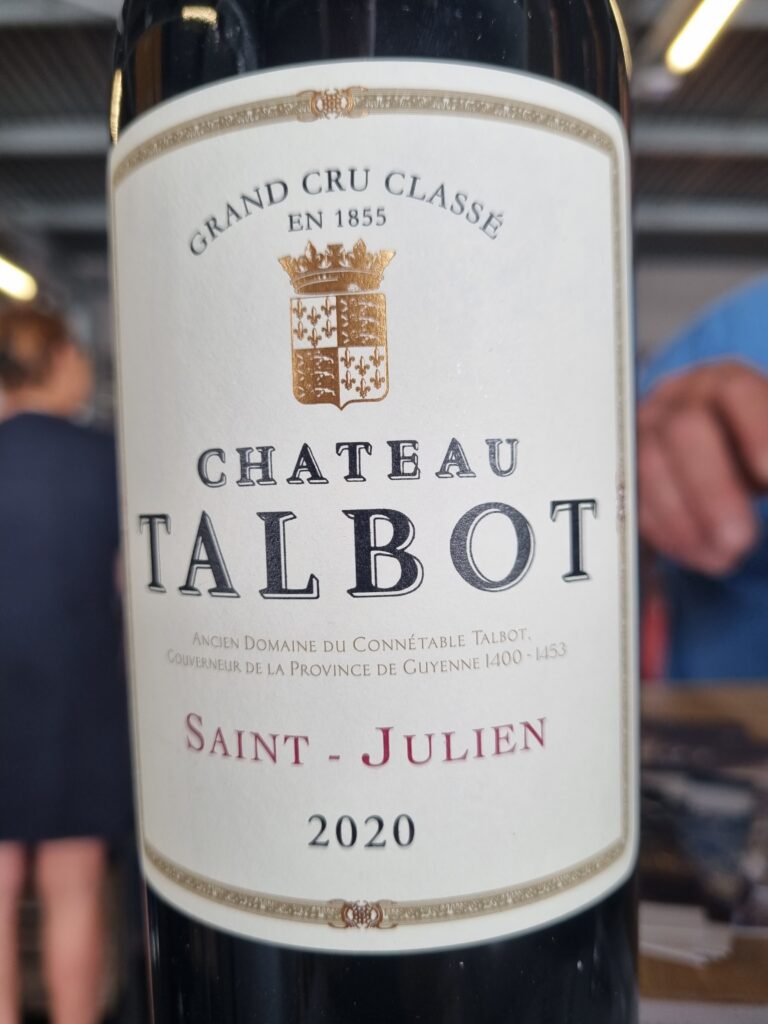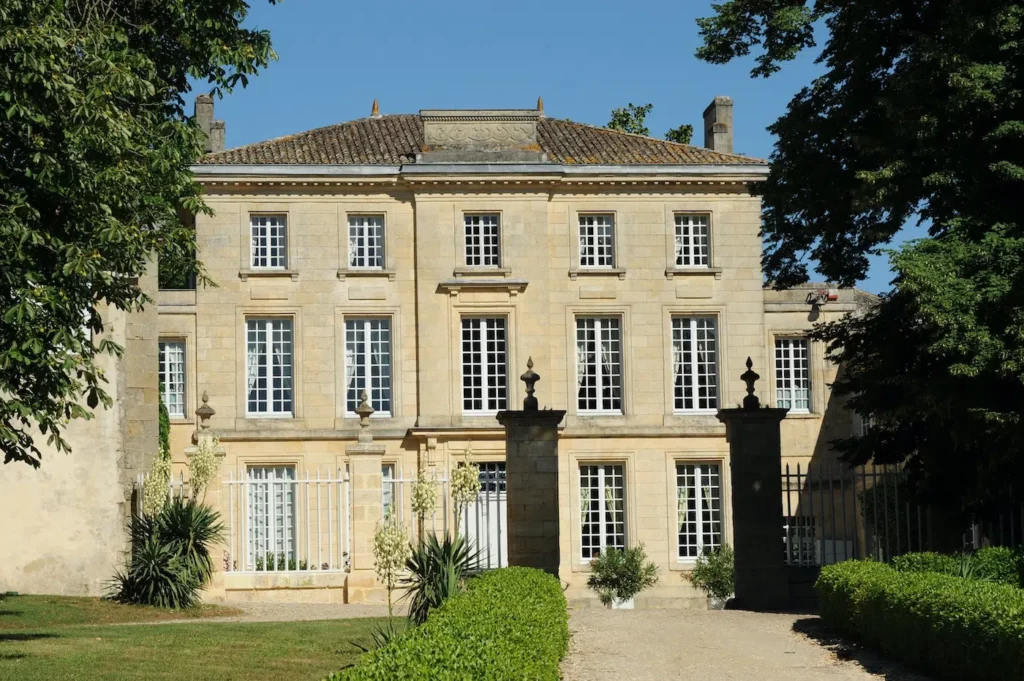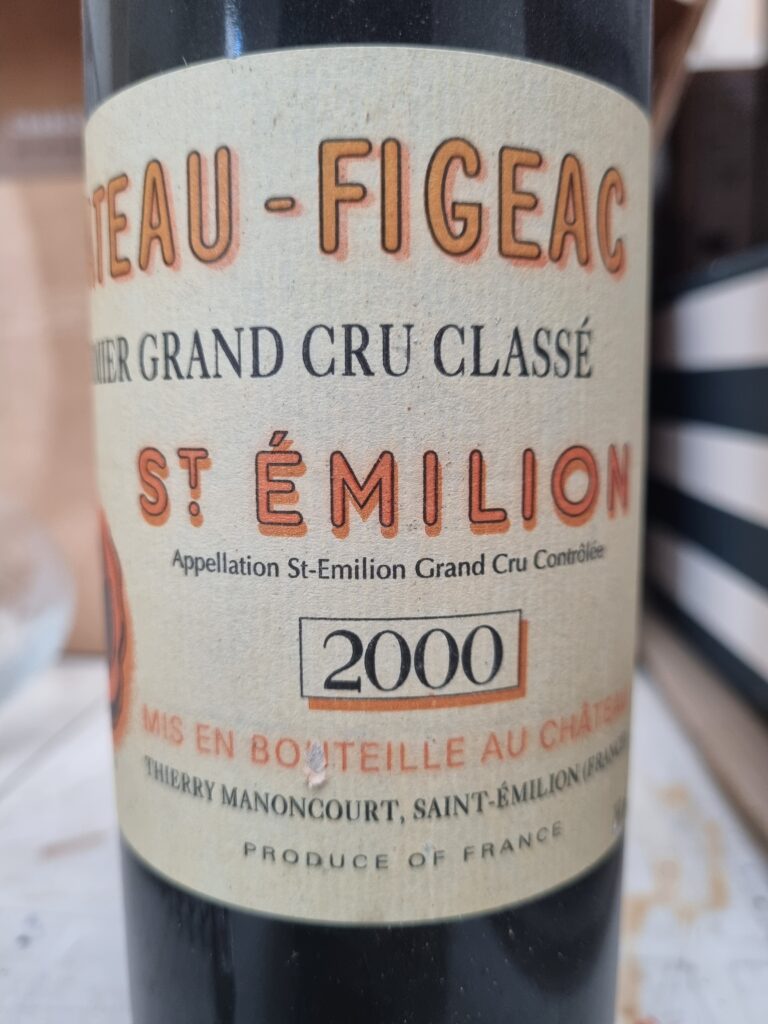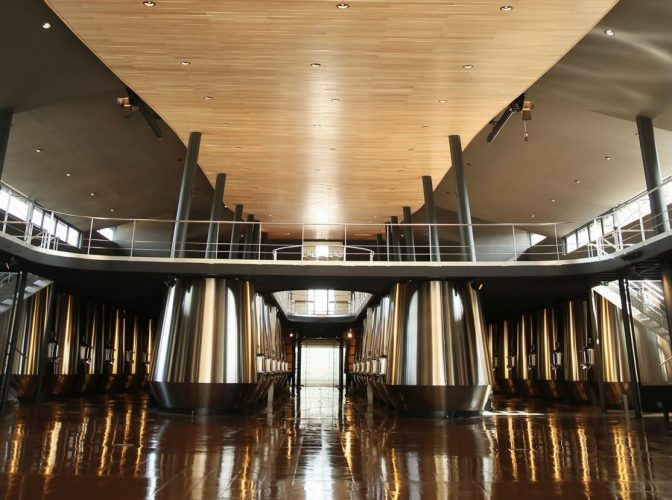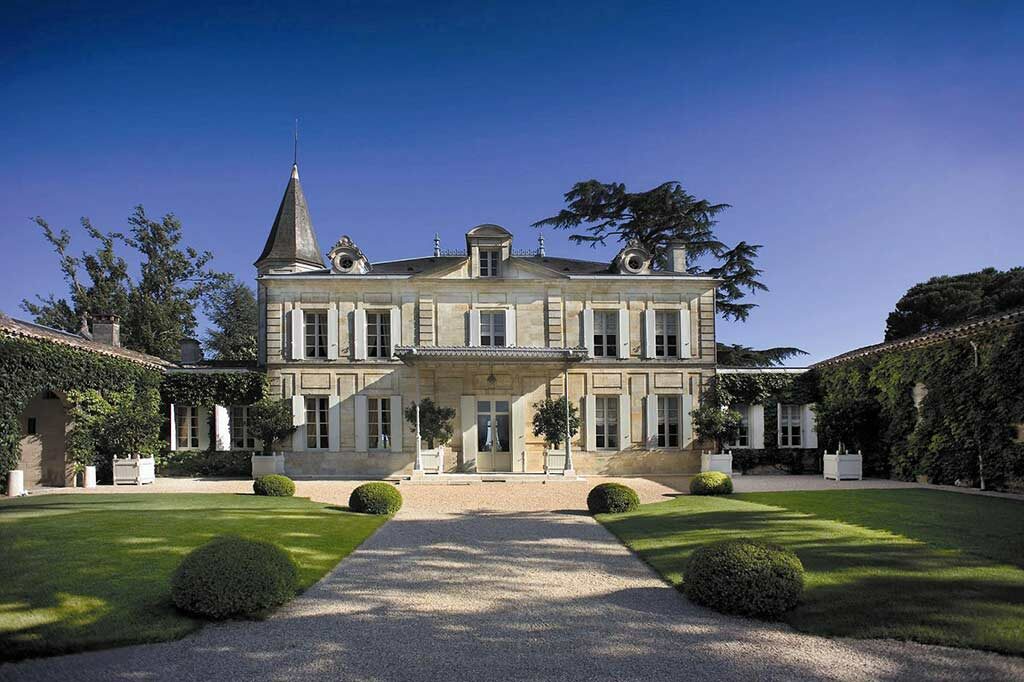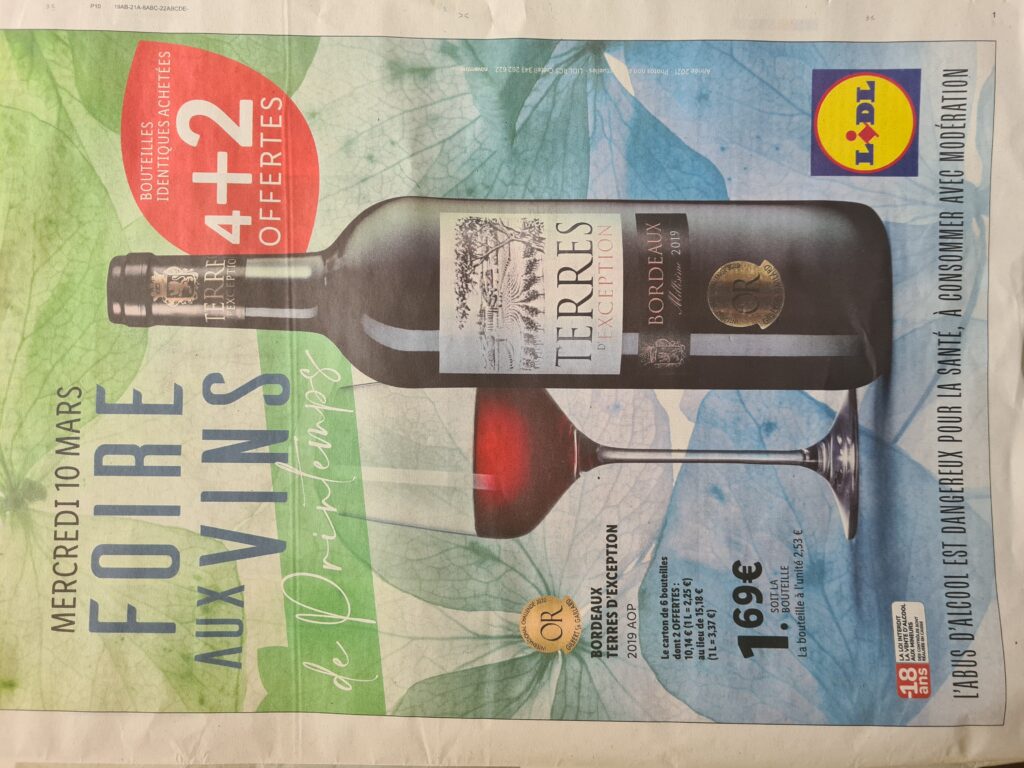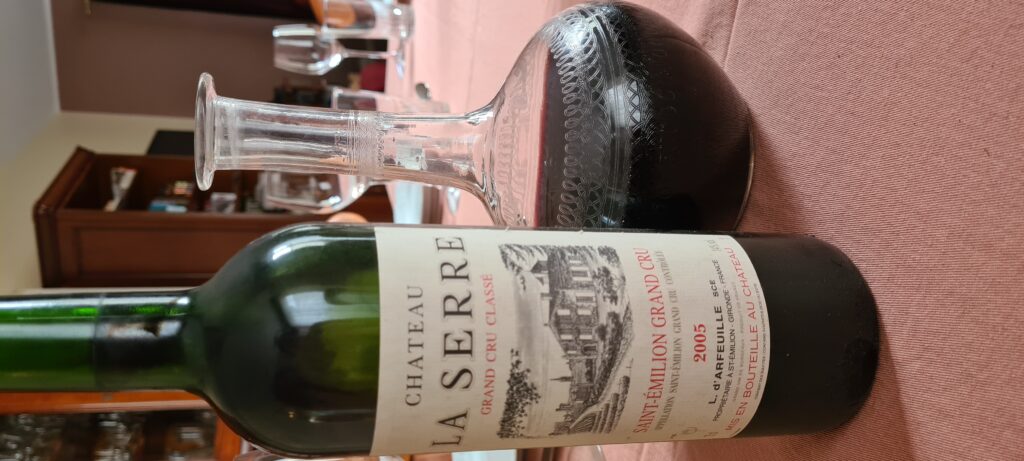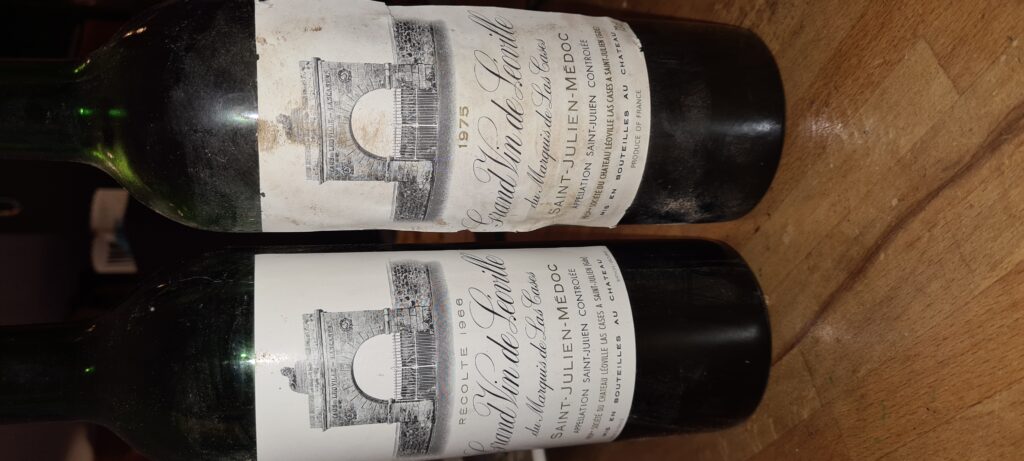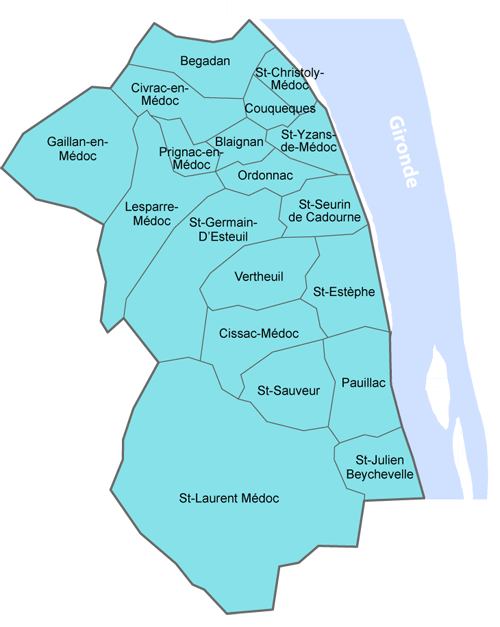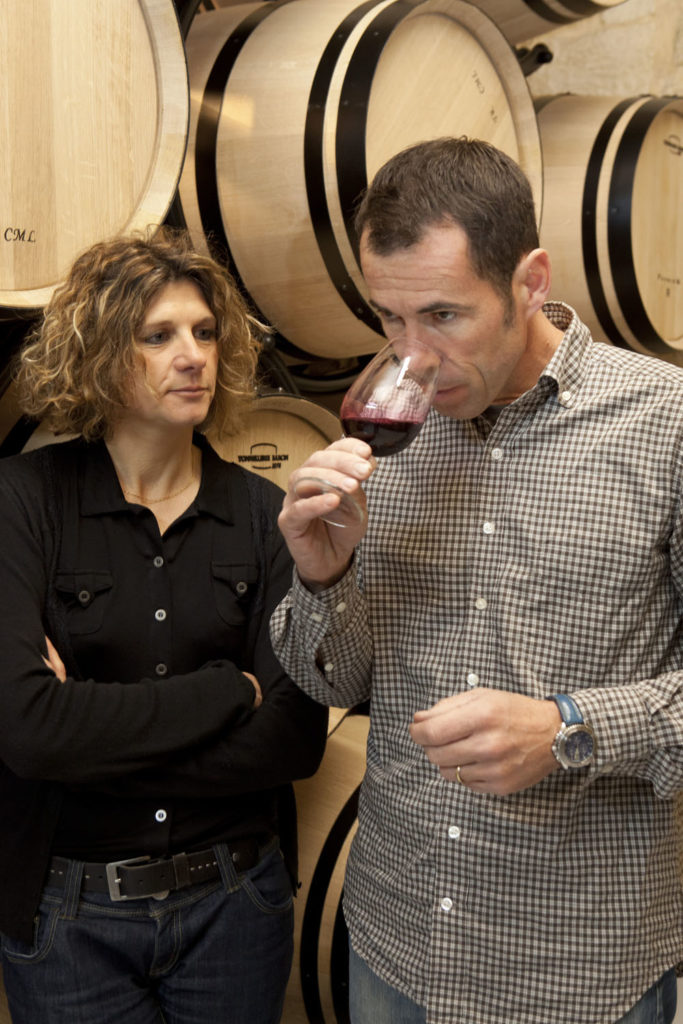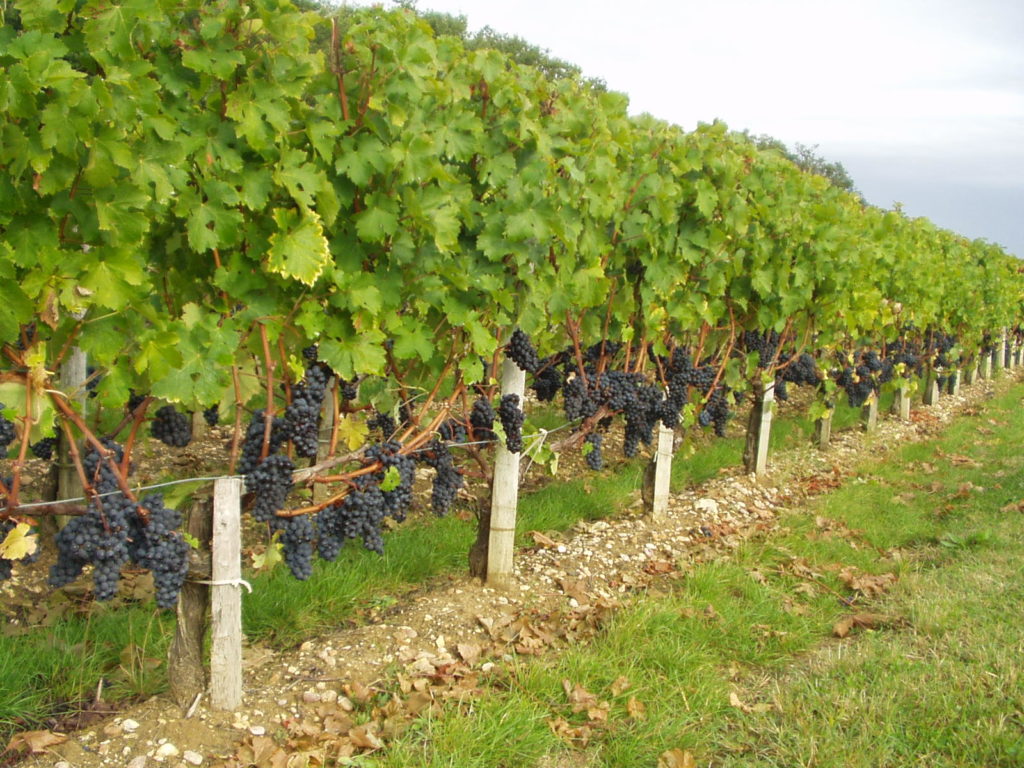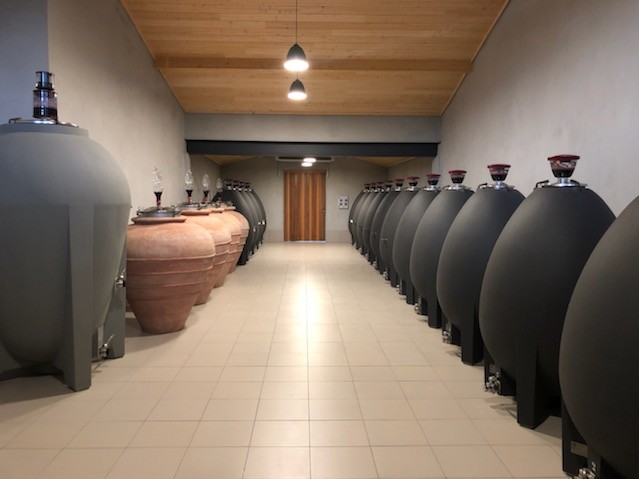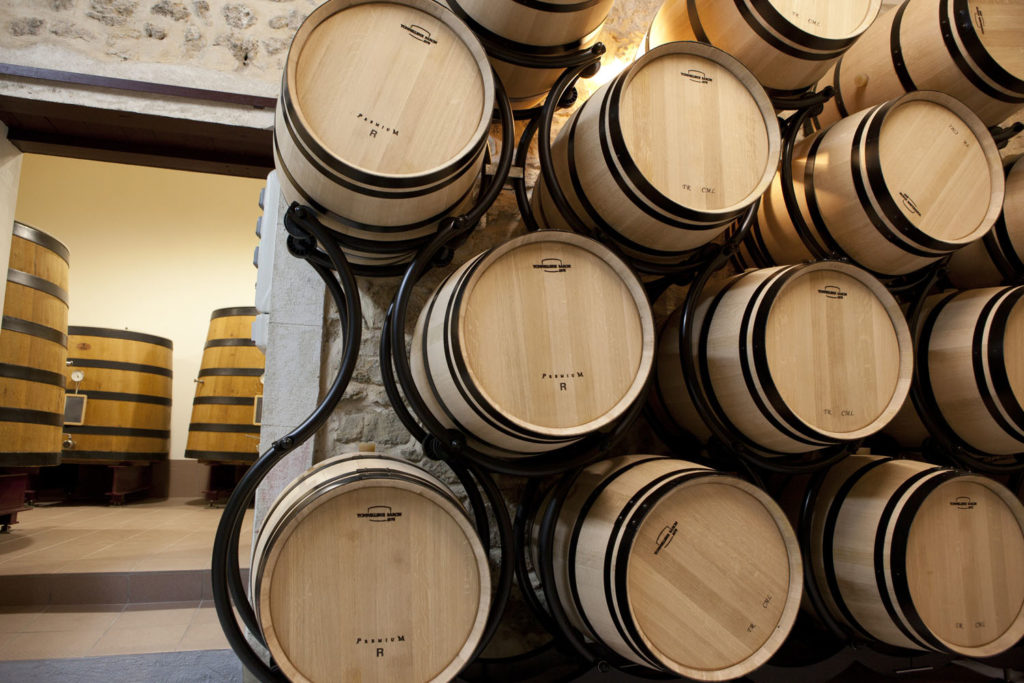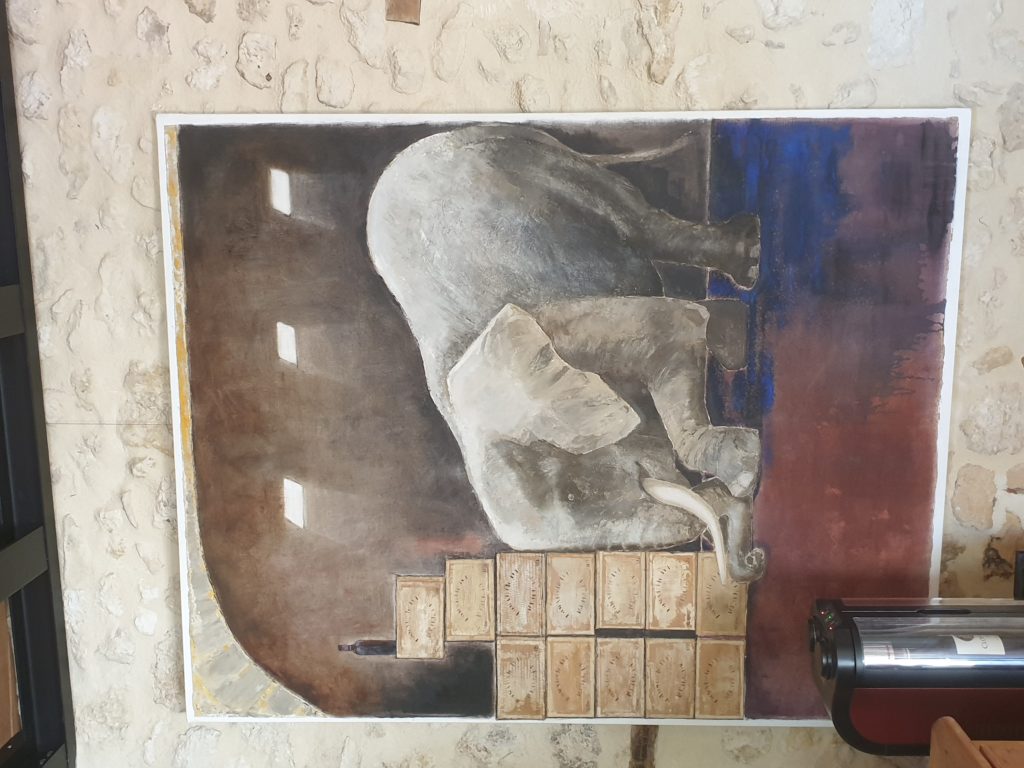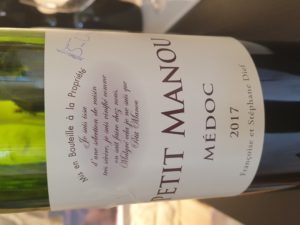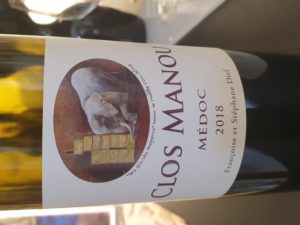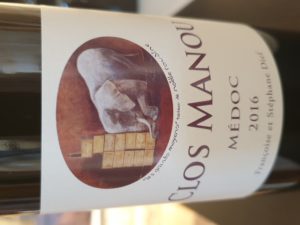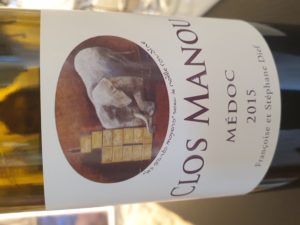I first became acquainted with Château Fleur Cardinale during a Portes Ouvertes (“Open Cellars”) operation in Saint Emilion several years ago. These events are always wonderful opportunities to visit numerous estates, taste, and buy wines if one so wishes.
Seeing as I had enjoyed the wine at Fleur Cardinale and appreciated the enthusiasm of the young owners, I resolved to go back and take a closer look at a less busy time.
I did well to wait, because the château has undergone a major renovation and is a tremendously different place from the one I had previously visited. Caroline Decoster kindly invited me to come by and take a tour of the new facilities In September 2021. These are truly impressive and it is obvious that no money was spared in giving Fleur Cardinale a new lease on life.

Located in Saint-Etienne-de-Lisse, Fleur Cardinale was originally known as Clos Bel Air. The story goes that, after it was purchased by the Obissier family in 1875, they called the estate Fleur Cardinale after two of their racehorses! Be that as it may, many Right Bank estates in Bordeaux have the name “fleur” (La Fleur Pétrus in Pomerol, La Fleur Perron and La Fleur de Boüard in Lalande de Pomerol, Fleur de Lisse in Saint Emilion, my friend Joseph Sublett’s Fleur de Roques in Puisseguin Saint Emilion, etc.).
The Decoster family came on the scene when they bought Fleur Cardinale in 2001. Previously owners of several firms producing Limoges china, including the famous Haviland brand, Dominique and Florence Decoster decided to sell their businesses and focus on their new estate in Saint Emilion.
They did not waste time in bringing this up to scratch, and were rewarded by its inclusion as a great growth in the 2006 classification of the wines of Saint Emilion, a status confirmed in the 2012 classification.
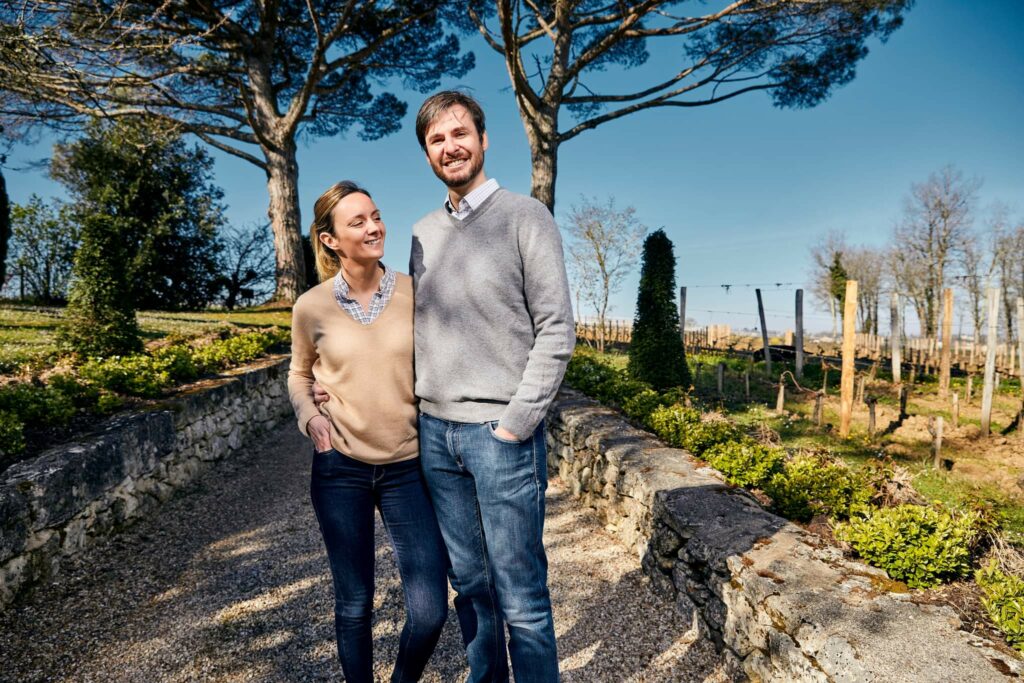
Their son Ludovic and his wife Caroline also decided to commit to this adventure. With no prior training, Ludovic threw himself into learning about winemaking and took over in this capacity at Fleur Cardinale in 2015. Caroline, with a master’s degree in management in the wine and spirts Industry is involved with sales, communication, and marketing.
I asked Caroline about the upcoming 2022 classification that has been so controversial since Cheval Blanc and Ausone withdrew, and further to a long and debilitating series of court challenges. Her reply was measured, but she obviously feels very strongly about the subject. She spoke of the hundreds upon hundreds of pages it took to apply, of the colossal efforts that had been made to bring the estate up to its present level, and the fact that the media had seized on very minor aspects of the criteria (presence of a receptionist, car park, foreign languages spoken, etc.) to attempt to denigrate and disqualify it.
She and her family are proud of Fleur Cardinale’s cru classé rank.
The Bordelais are past masters in the art of combining striking architecture with a vineyard estate. Fleur Cardinale’s originality and attractiveness lie more in its interior design than its exterior. There is an exhibit of Limoges china as you enter and then a circuit taking you though child-friendly exhibits telling the story of viticulture. The new vat room is state-of-the-art and the impeccable cellar contains 100% new barrels for the grand vin.
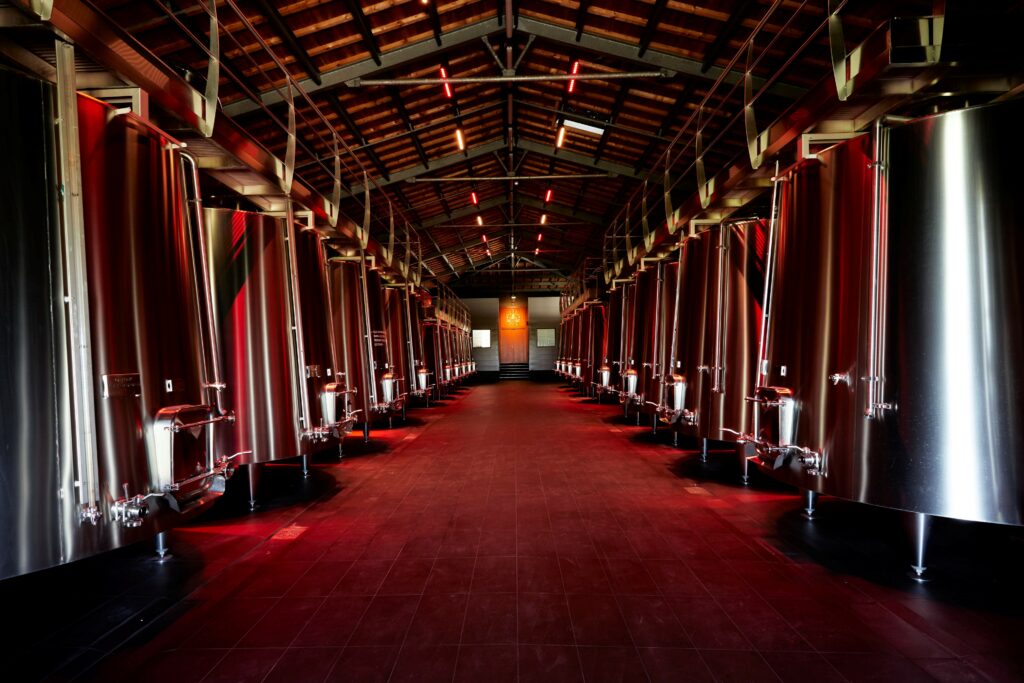
The building’s back deck affords a sweeping view of Fleur Cardinale’s vines (75% Merlot, 20% Cabernet France, and 5% Cabernet Sauvignon) in a single block. They grow on gently rolling terrain on the highest part of Saint Emilion’s limestone plateau, surrounded by châteaux Valandraud, Pressac, Rol Valentin, and Faugères. Although Michel Rolland’s team are winemaking consultants, Jean-Luc Thunevin at nearby Valandraud has provided precious advice to the Decosters over the years. When Fleur Cardinale grew from its original 18 hectares to the present 23.5, part of the newly-acquired vines were situated on a cooler north-facing slope. Jean-Luc suggested that it would be more appropriate to plant white wine grapes there, and the Decosters heeded his advice. Their first white wine will be marketed in years to come, when the quality meets the owners’ expectations.
The estate presently produces three wines: the cru classé Fleur Cardinale, a second wine called Intuition (from the 2018 vintage onward), and another wine named Croix Cardinale from a plot that is not in the immediate vicinity.
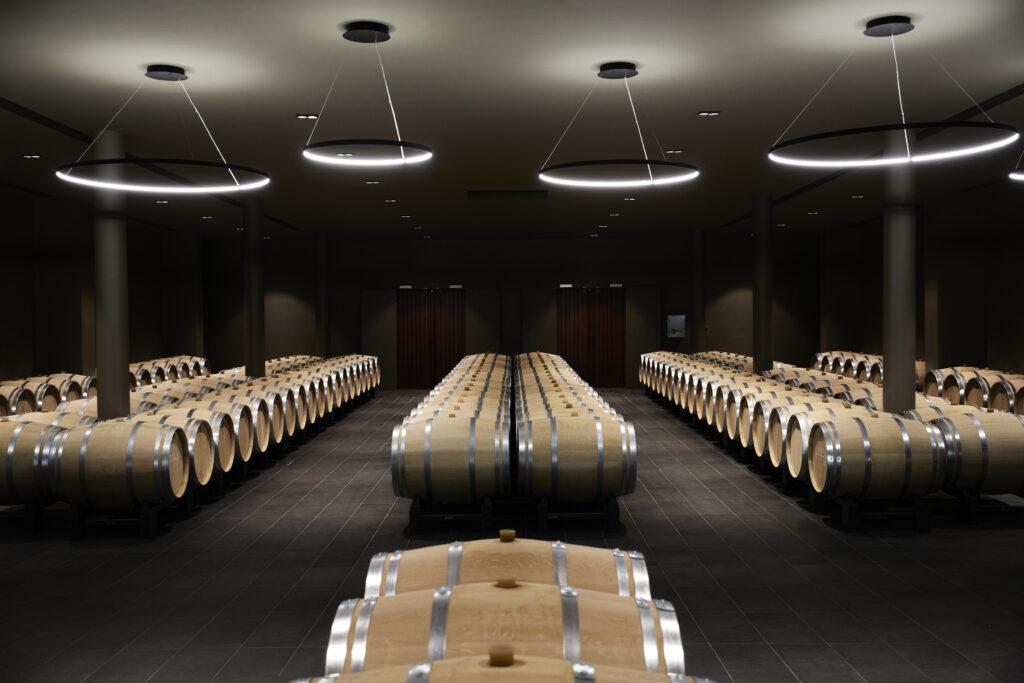
After visiting the cellars, Caroline took me up to the second floor where there is a world-beating tasting room with plate glass windows everywhere, tasteful modern furniture, bookshelves, a sound system, an automatic wine dispenser, and an intimate feel. The look is reminiscent of a huge suite at a top-notch boutique hotel – but with a view over the vines. Everything is geared up for new generation wine tourism.

And what of the wines? I tasted through the range in the 2018 vintage. This was a hot year, troubled by widespread high alcohol levels. However, this was not the impression I had when tasting the Decoster wines. The grand vin, Fleur Cardinal, was showing very well and, although somewhat oaky at this stage, had a rich, layered, velvety texture and smooth mouth-coating tannins. It was those qualities that attracted me to Fleur Cardinale in the first place. Mercifully, the pricing is definitely on the reasonable side too, retailing in France for 45/50 euros a bottle.
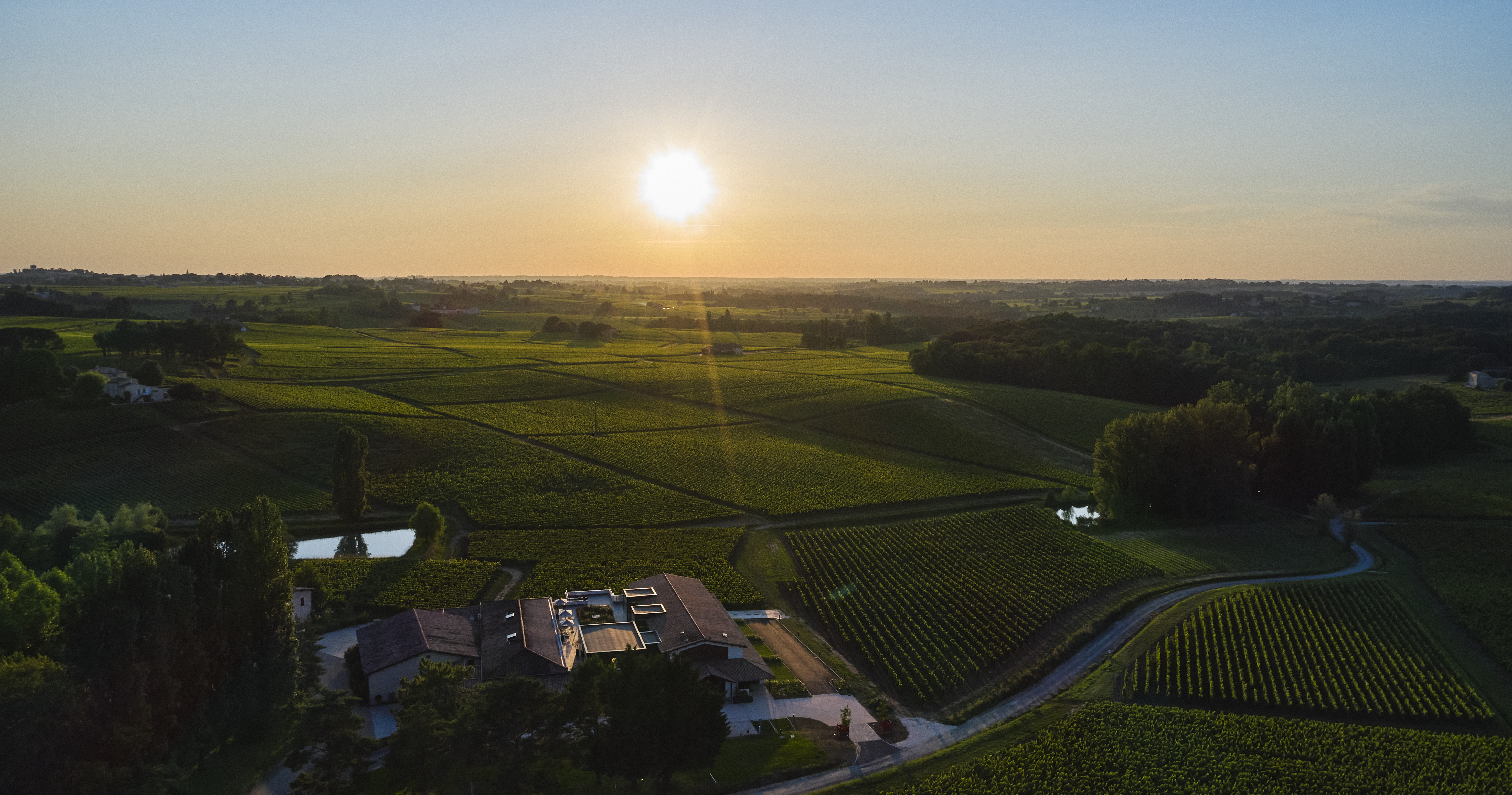
The go-ahead, positive attitude at the château is contagious. Ludovic is conducting various experiments with vinification intégrale and is even considering agroforestry, i.e. planting trees among the vines! 2021 was Fleur Cardinale’s first year of organic viticulture and it would be an understatement to say that this presented a few major challenges… In fact, there was frost in the vineyard for 9 days in a row at the beginning of the growing season, followed by severe attacks of mildew like elsewhere in Bordeaux. The château is expecting only 50% of a normal crop, tops. When explaining this, Caroline smiles philosophically and says that after this terrible introduction to organic farming, things can only get better!
Like everyone else, I like success stories and I’m pleased to say that Fleur Cardinale fits the bill. It’s an estate well worth watching.
